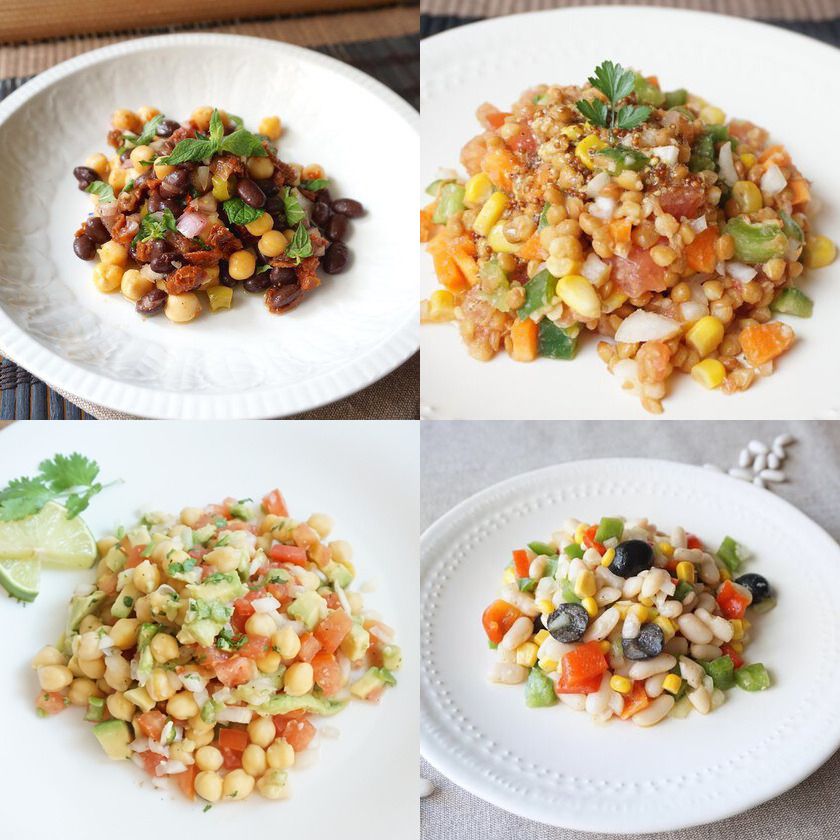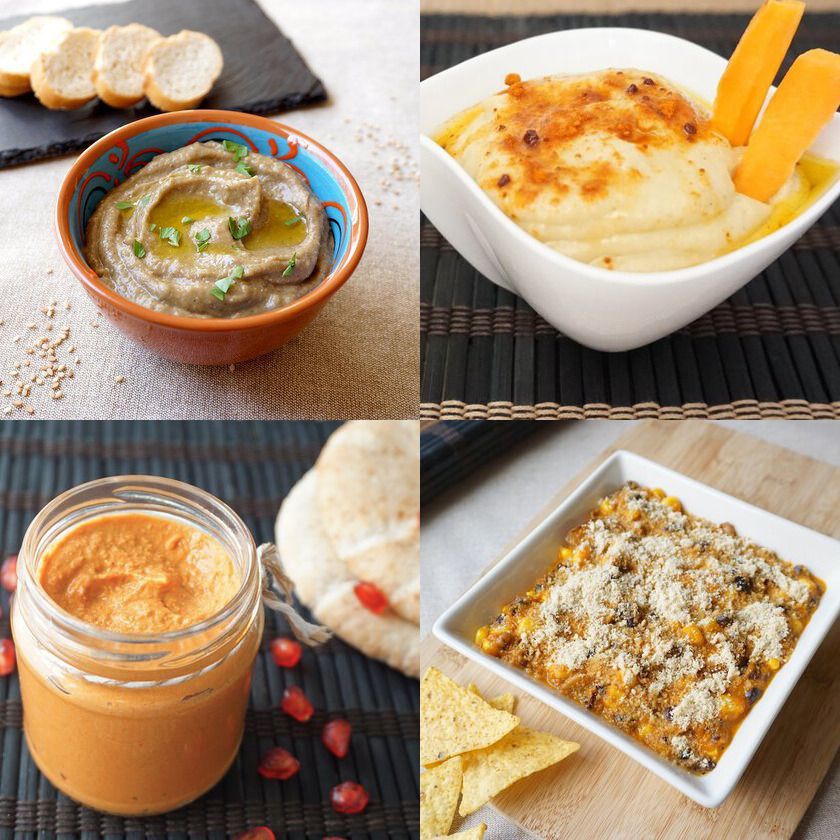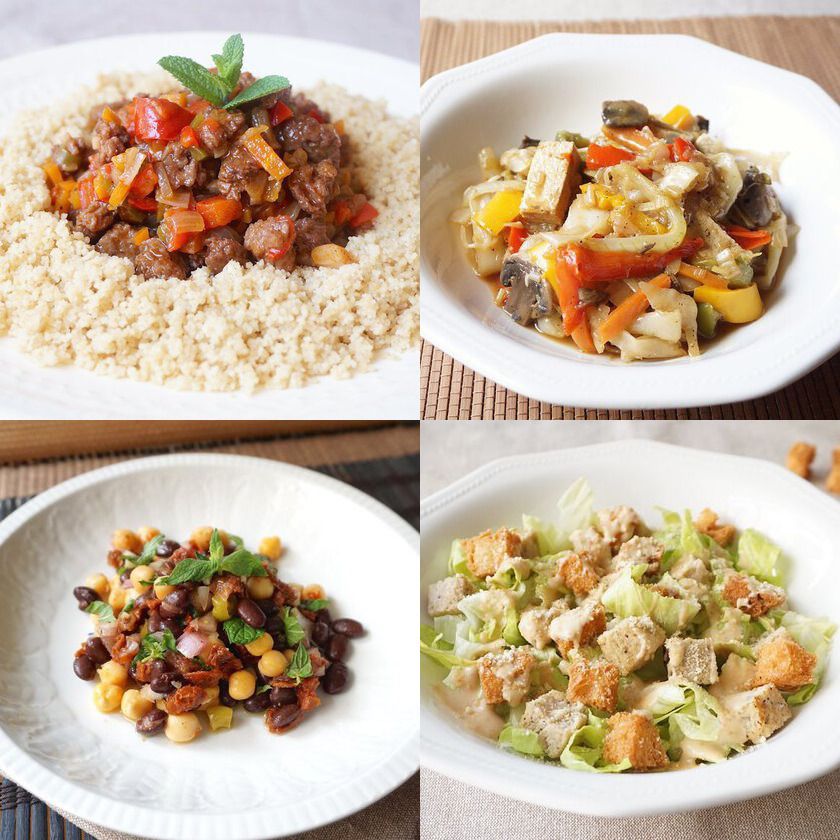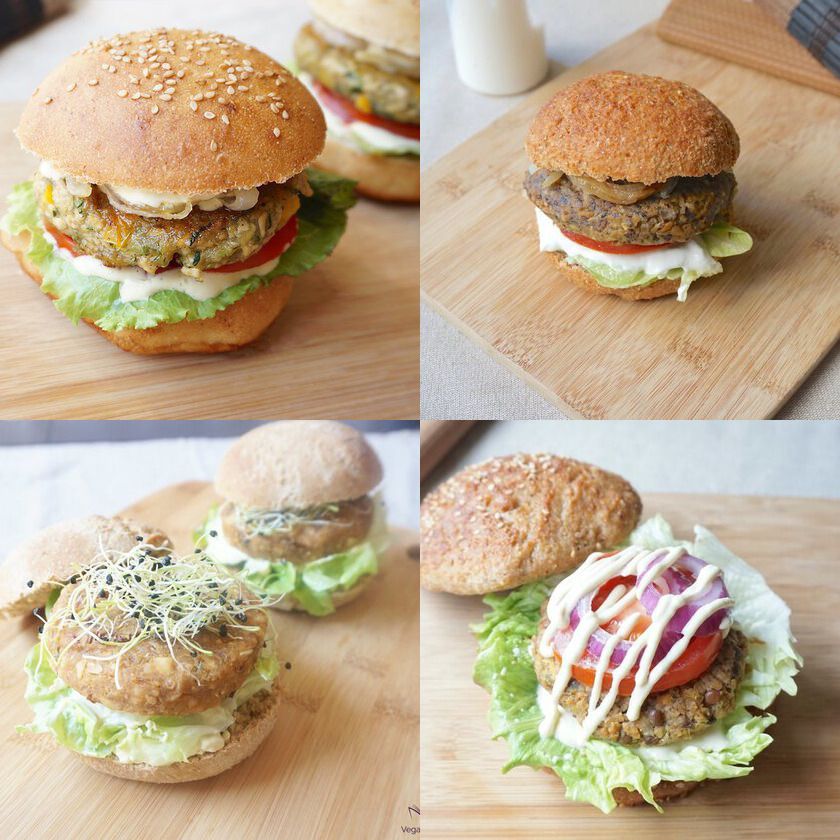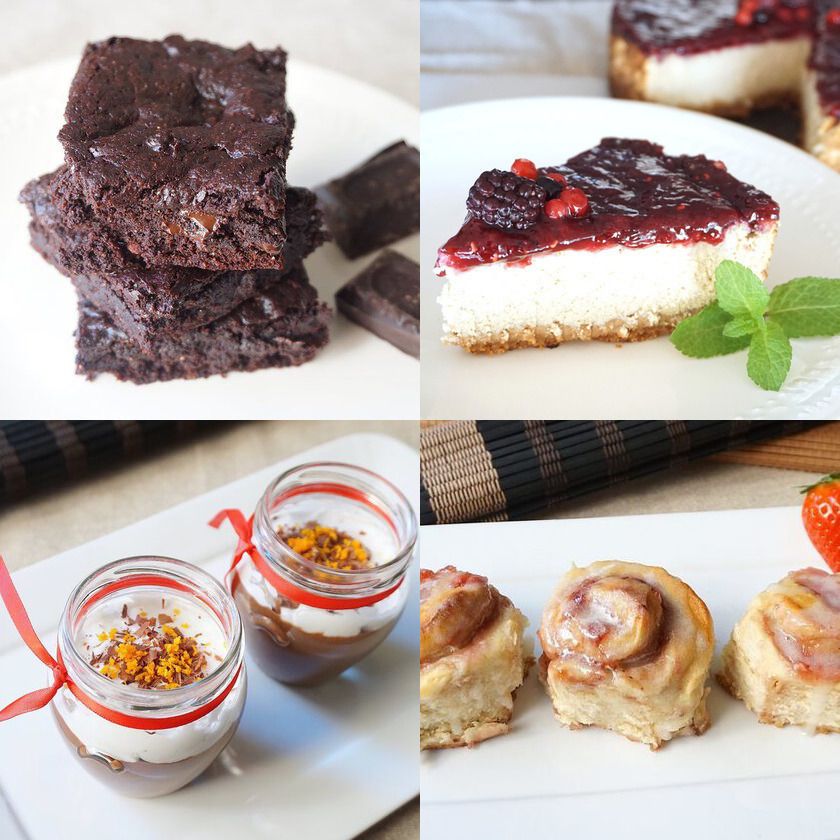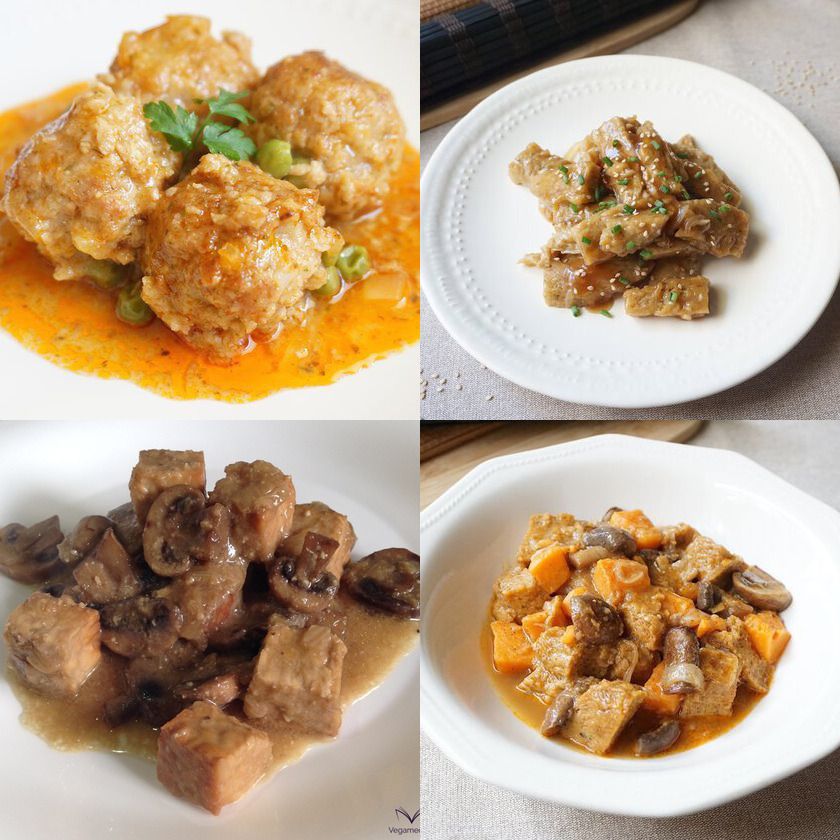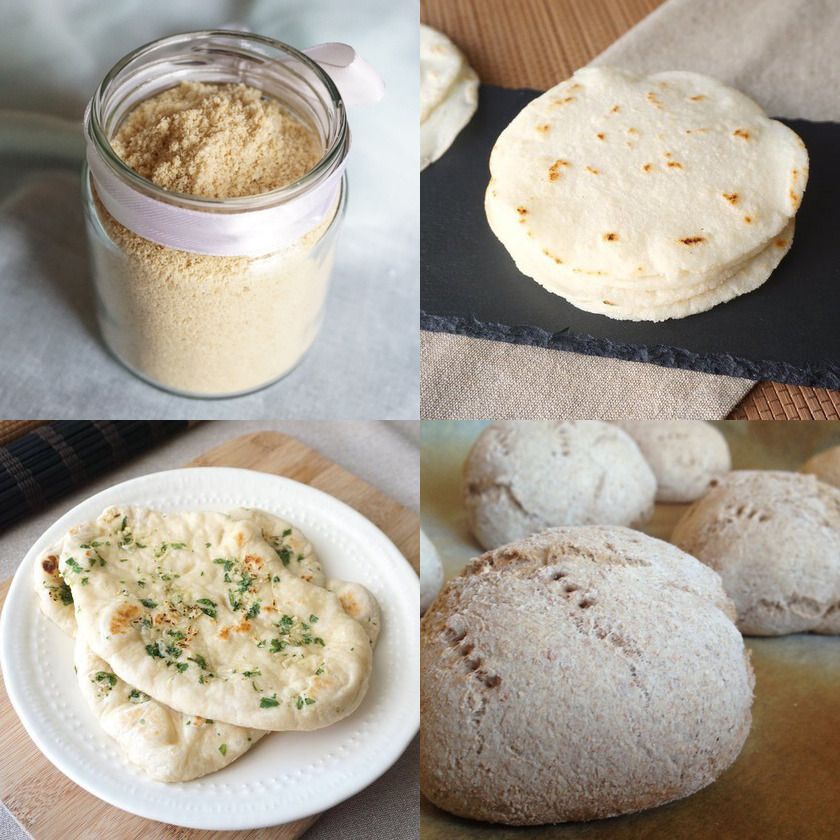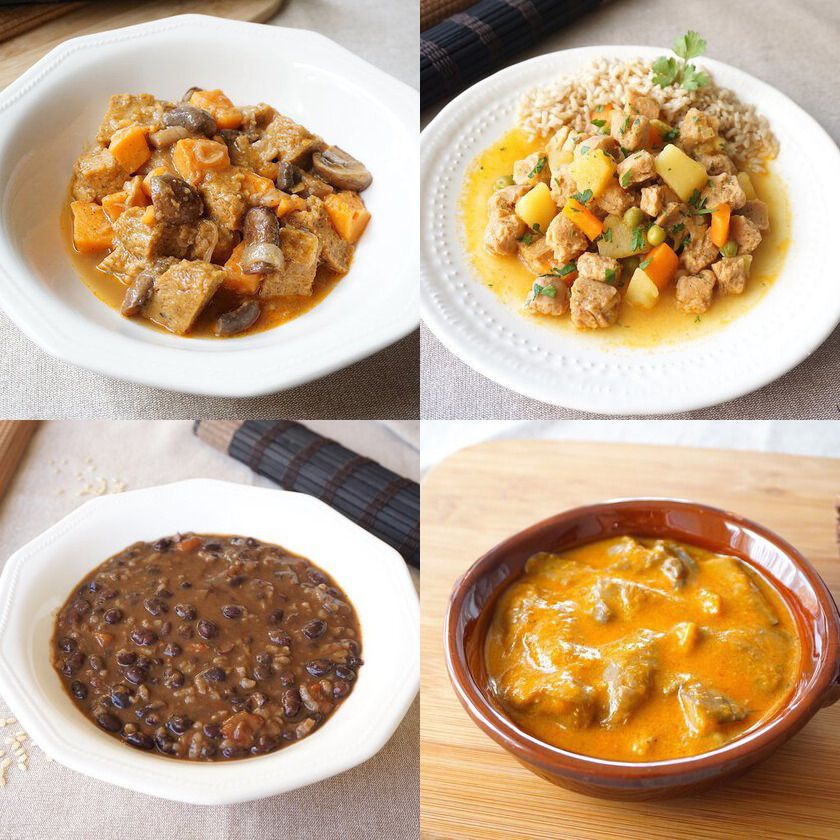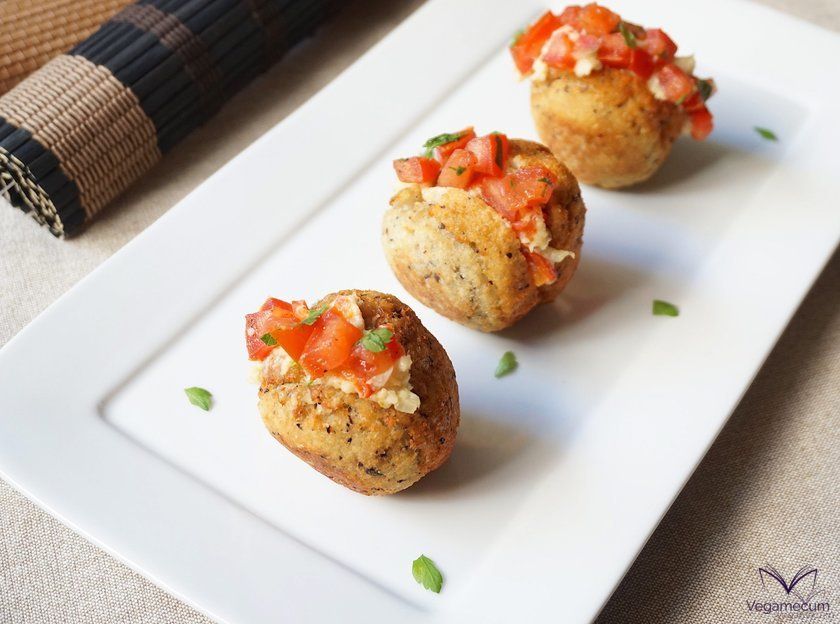
Acarajé with vatapá is a very typical dish from Brazil, and especially from Bahia. It is a very tasty dish in which the influence of African, indigenous and Portuguese cuisine converges (as is the case in much of Brazilian cuisine), since acarajé is one of the preparations that introduced the country people who brought slaves from Africa in the 16th century.
The texture of this exquisite entree is crispy on the outside and tender and creamy on the inside, with a soft and exotic flavor, seasoned with a very vivid point created by the garnish.
Due to its characteristics, the acarajé with vatapá reminds us of the traditional bombs , but instead of with potatoes, this one is made with beans, thus giving rise to a kind of stuffed vegetable meatball. Another difference is that the filling, instead of being introduced before frying, is added once the acarajé is fried.
The main ingredient of acarajé is the black eyed bean, a legume of the pea family that comes from Africa and that in Brazil is known as fradinho bean. Being a type of pea gives it a very unique taste and tenderness.
As for vatapá, other ways to enjoy its delicate flavor and creaminess is to consume it as a single dish, as an accompaniment to white rice, on slices of toasted bread or in canapés.
Nutritionally, this recipe is rich in protein , fiber , lecithin , flavonoids , essential fatty acids omega 6 , allicin , alliin , terpenoids , beta-carotene , lycopene , phytosterols , tryptophan , carbohydrates , choline , cinnamic acid, acetic acid , GammaAminoButyric acid (GABA ), vitamins A , C , E and group B ( B1 , B2 , B3 , B5 , B6 and B9 or folic acid ); sulfur , calcium , copper , chromium , phosphorus , iron , magnesium , manganese , potassium , selenium , sodium and, to a lesser extent, zinc .
Below you can see what ingredients you need and the steps to follow to make this popular and delicious Afro-Brazilian dish.
| Difficulty level | Preparation time | Rations |
| Half | 2 h. | For 20 units |
* Plus 12 hours of hydration
For the acarajé
- 500 gr. black-eyed beans
- 1 onion
- 1 tablespoon chives (chopped)
- 1 tablespoon salt
- 1 teaspoon white pepper (ground)
- 200 ml. extra virgin olive oil (to fry)
For the vatapá
- 200 gr. breadcrumbs (from the previous day)
- 400 ml. coconut milk (canned)
- 1 red pepper
- 1 onion
- 2 garlic cloves
- 100 gr. roasted and salted cashews
- 30 gr. ginger
- 1/2 teaspoon white pepper (ground)
- 1 teaspoon cumin (ground)
- 2 cayenne peppers
- 1/2 teaspoon salt
- 1 lemon juice
- 1 tablespoon parsley (chopped)
- 3 tablespoons extra virgin olive oil
For the garnish
- 2 tomatoes (pear type)
- 1/4 teaspoon white pepper (ground)
- 1/2 lemon juice
- 1/4 teaspoon salt
- 1 teaspoon parsley (chopped)
Instructions
- Soak the beans for 12 hours.
- After this time, drain the water, rinse the beans and put them in a bowl. Chop the onion and add it to the bowl with the white pepper, chopped chives and salt. Stir to mix well the ingredients, put them in a food chopper and chop them until obtaining a uniform mass. Transfer the mass to a bowl, cover it and let it sit for 1 hour.
- Meanwhile, prepare the vatapá. To do this, chop the onion and pepper very small and, in a pan, heat the oil. When the oil is warm, add the onion and sauté for a couple of minutes.
- Add the pepper, stir and cook over medium heat for 7 minutes, until the pepper is soft. Remove from the heat and set aside.
- Take the bread crumb, put it in a bowl and add the coconut milk. Mix with your hands forming a dough, add the salt, mix again and set aside.
- In another bowl, put the cashews, garlic, chives, pepper, cumin, cayenne pepper, ginger and lemon juice and blend it all with the blender until it forms a dough. Add the chopped parsley, the bread crumb and coconut milk mixture and the onion and pepper sauté. Mix everything well and set aside.
- Prepare the garnish by washing the tomato, removing the seeds and cutting it into small pieces. Pass them to a bowl and add the lemon juice, salt, pepper and chopped parsley and mix very well. Set aside.
- Form balls of about 25 gr. each one with the bean dough, put to heat the oil in a slightly deep pan and, when it is very hot, fry the balls in batches. When they are browned on both sides, remove them from the heat and put them in a colander or drainer to remove excess oil.
- When all the balls are fried and drained, make them a deep cut in half, without cutting them completely, and fill them with a little vatapá with the help of a teaspoon. Dress them with a little of garnish and serve.
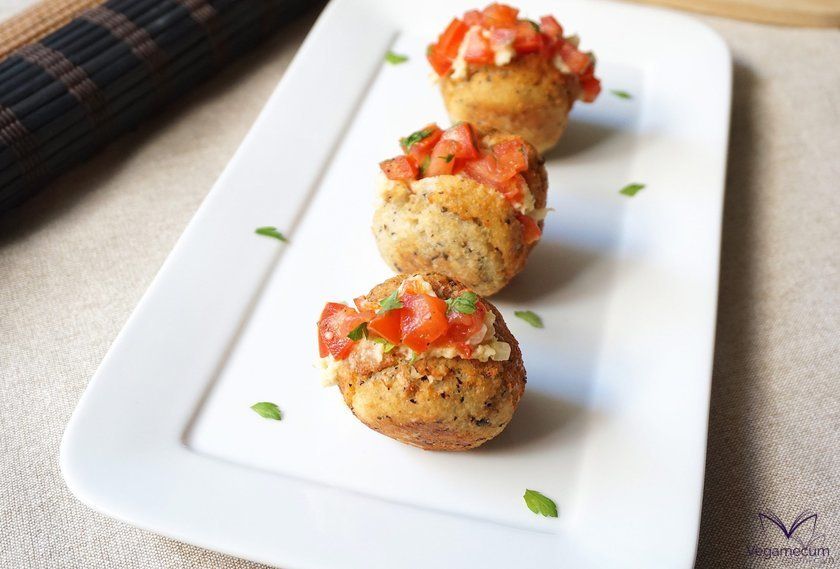

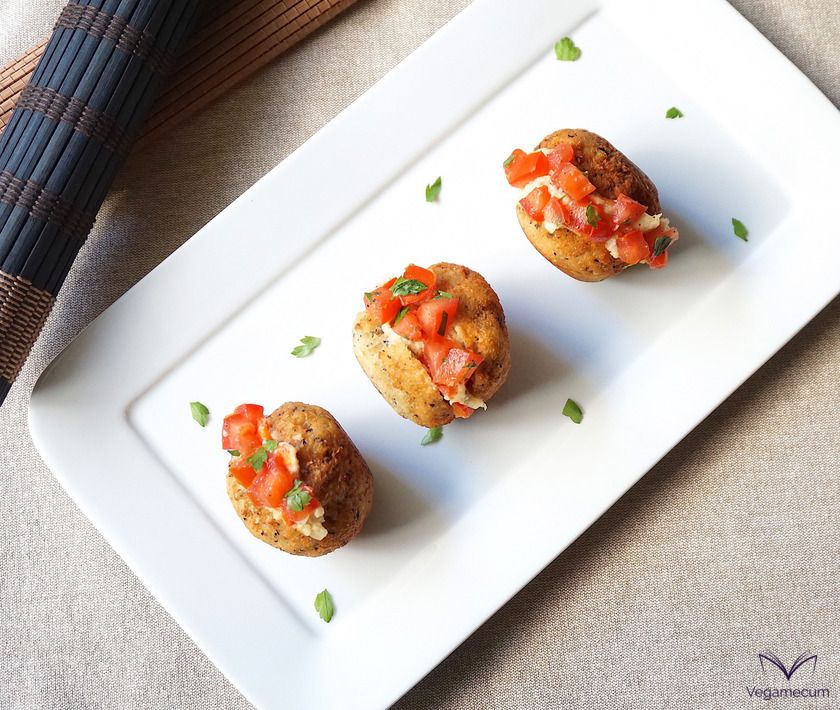
Notes
- To fry the acarajé, in Brazil they use dendê (palm) oil, which gives it the unique reddish color; but in this recipe we have used olive oil.
- Make sure that the bread you use does not carry anything of animal origin, such as butter, milk, egg and / or mono and diglycerides of fatty acids of animal origin (e471).
If you have any questions, you can leave it to us in the comments. And if you dare and want to show your creations to the world, do not hesitate to label us, we will love to see them through the networks!
Do you join us on social networks? You will find us on Facebook, Twitter, Instagram and Pinterest!

